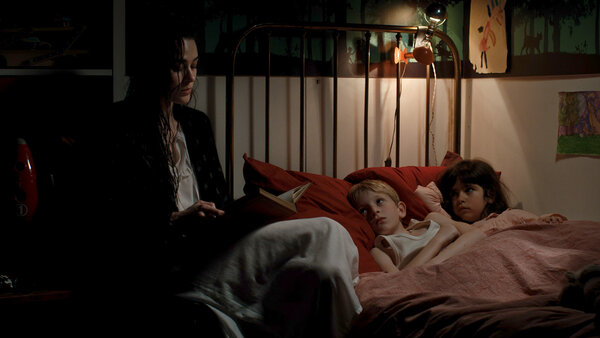Festival de Cannes 2024
Caroline Champetier, AFC, describes her latest collaboration with Leos Carax
We filmed for a week and a half as an evolving team using a Sony Venice 2 and an Alpha 7SIII, very different lenses adapted to each sequence, electrical equipment and machinery when we needed it. Then a day in a studio for the sequence when baby Annette is jogging to ’Modern Love’ on a treadmill ; for which Florian Sanson and Margot Remaury made a delightful small-scale fence suspended from clothing racks.

Leos Carax edited alone, as a lone wolf, for several months, which hinted at a complicated post-production. And it was indeed. Sourcing and then obtaining in high definition (sometimes reverting to their internet version) and negotiating the rights to all these images was a heroic task. Equally so for the music rights.
All these images, with their different textures, colours and resolutions, were colour graded by Frédéric Savoir. The three of us wondered about each one of them. How we could give new substance to the sequence of the Merde trial (Tokyo segment) shot with a DVX100 in 2008. How to homogenise a series of oversaturated and toned photos from a father’s Super 8 film, without removing the sense of wonder that every new appearance brings. What sequence to give to dictators who stoke hatred everywhere in the world and make it a visual family without aestheticization, or how to superimpose lightning bolts on the sequence where Nastia plays the piano.

When you work with images you’ve created, there’s something about the gesture that needs to be perfected, a certain obsession is at play. Composing a score with images from elsewhere firmly places us in the realm of meaning. Their literal meaning and the meaning that the filmmaker attributes to them in his work. It’s exciting, funny, sometimes almost impertinent.

There remains a series of images following an extract from Charlie Chaplin’s The Emigrant, images which were broadcast on television, reproduced in newspapers : children’s bodies washed up on a Mediterranean beach. Those burn the eyes.
 En
En Fr
Fr





